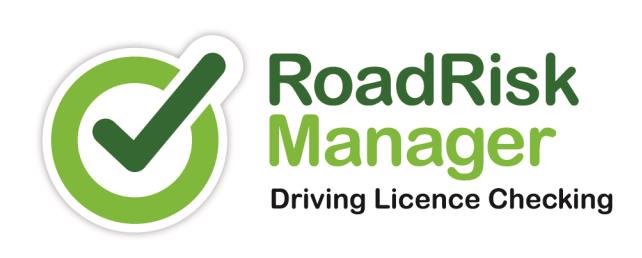Group 1 Driving Licence Entitlements
Group 1 driving licence come under the Motor Vehicles (Driving Licences) Regulations 1999. 'Group 1 licence' means a driving licence which authorises its holder to drive vehicle classes categories of the motor vehicle.
The following details offer an overview of the Group 1 driving licence entitlement.
Drivers Test Passed & Qualified before January 1997
Until 31 December 1996 drivers passing their car test (category B) also normally gained automatic entitlement to drive vehicles up to 7.5 tonnes maximum authorised mass (sub-category CI) without taking a further test. This also included such vehicles towing a trailer with a mam not exceeding 750kg, which is covered by sub-category CI.
If a larger trailer is drawn the mass of the combination may be up to 8.25 tonnes mam provided the towing vehicle does not exceed 7.5 tonnes. For example, a pre-1997 category 1 driver may drive a van of 6 tonnes mam towing a 2 tonnes mam trailer. This is known as subcategory CI plus E (category restriction 107): up to 8.25 tonnes mam. It is possible for a driver from this group to upgrade his entitlement to 12 tonnes gross combination weight by taking an additional test.
Entitlements gained bypassing the ordinary car test which will continue to be valid for these drivers despite the changes from 1 January 1997 are as follows:
- Category B - covers goods vehicles with a mam of up to 3.5 tonnes (eg panel van) and passenger vehicles with up to eight passenger seats (eg saloon car or people carrier). This category also covers these vehicles towing a trailer with a mam of up to 750kg.
- Category B plus E - covers vehicles in category B towing a trailer with a mam over 750kg (though the towing vehicle's gross train weight should never be exceeded).
- Sub-category CI - covers goods vehicles with a maximum gross weight over 3.5 tonnes and not 10 exceeding 7.5 tonnes and includes these vehicles towing a trailer with a mam of up to 750kg.
- Sub-category CI+E - covers vehicles in sub-category CI pulling a trailer with a mam over 750kg provided the total combined weight does not exceed 8.250kg (see above).
- Sub-category D1 and D1+E - covers minibuses up to 16 passenger seats plus driver.
For further information related to class of vehicles and categories, see Driving Licence Category
Drivers Test Passed & Qualified from January 1997
Drivers passing their car test from January 1997 may only drive vehicles in category B, a further test will be required if a driver wishes to obtain CI entitlement. Category B also permits the towing of trailers with a greater mam than 750kg provided:
- The maximum gross weight of the trailer does not exceed the unladen weight of the towing vehicle; and
- The total of the two mams together does not exceed 3.5 tonnes
The weights below would therefore apply:
- Van mam = 3,500kg
- Trailer mam = 750kg
- Van ULW = 1,500kg
- Maximum total mass= 4,250kg (a + b)
Probationary Period
Ordinary licence holders who have passed their driving test since 1 June 1997 have to observe a two-year probationary period. Within that time a driver's licence will be automatically revoked and the holder will need to be re-examined if six or more penalty points are accumulated. Both theory and practical tests will need to be retaken.
It is worth noting that any points received by the holder prior to the granting of a full licence will be valid in calculating the six point's total.
Medical Requirements – Eyesight
For the purpose of medical requirements licences are separated into 2 groups:
Group 1 licences - For categories A, B, B+E, F, G. H, K, L, and P
Group 2 licences - For any other category - C1, C1+E, C, C+E, D1, D1+E, D, D+E
Medical tests are required for Group 2 licence holders on the application for or renewal of a licence.
Defective Eyesight
Section 96 Road Traffic Act 1988 - level 3 fine - summary offence
It is an offence for a person with uncorrected defective eyesight to drive a motor vehicle on a road.
Police Power
A Police constable having reason to suspect that a person driving a motor vehicle may be guilty of an offence of driving with uncorrected defective eyesight may require him to submit to a test.
Section 96(3) Road Traffic Act 1988 - level 3 fine - summary offence
It is an offence for a person to refuse to submit to such a test.
Eyesight Requirements
Regulation 72 Motor Vehicles (Driving Licences) Regulations 1999
CARS
Distance
the legal requirement is that you must be able to read in good daylight, with the aid of corrective lenses if worn, a motor vehicle number plate of the prescribed size at a distance of 20.0 metres or 12 metres for category K vehicles (mowing machines or pedestrian-controlled vehicles).
The prescribed size is letters 79 mm high and 50 mm wide.
You must also not have been told by a doctor or optician that your eyesight is currently worse than 6/12 (decimal 0.5) on the Snellen scale, using both eyes, or one eye if you have sight in one eye only - you may use glasses or contact lenses. If there is any doubt about this you should speak to your doctor or optician.
Field of vision
This must also be of a satisfactory standard, your optician can explain about this and carry out a test.
The following should assist in giving guidance and further information, please use the links below.
Driving Eyesight Rules - https://www.gov.uk/driving-eyesight-rules

